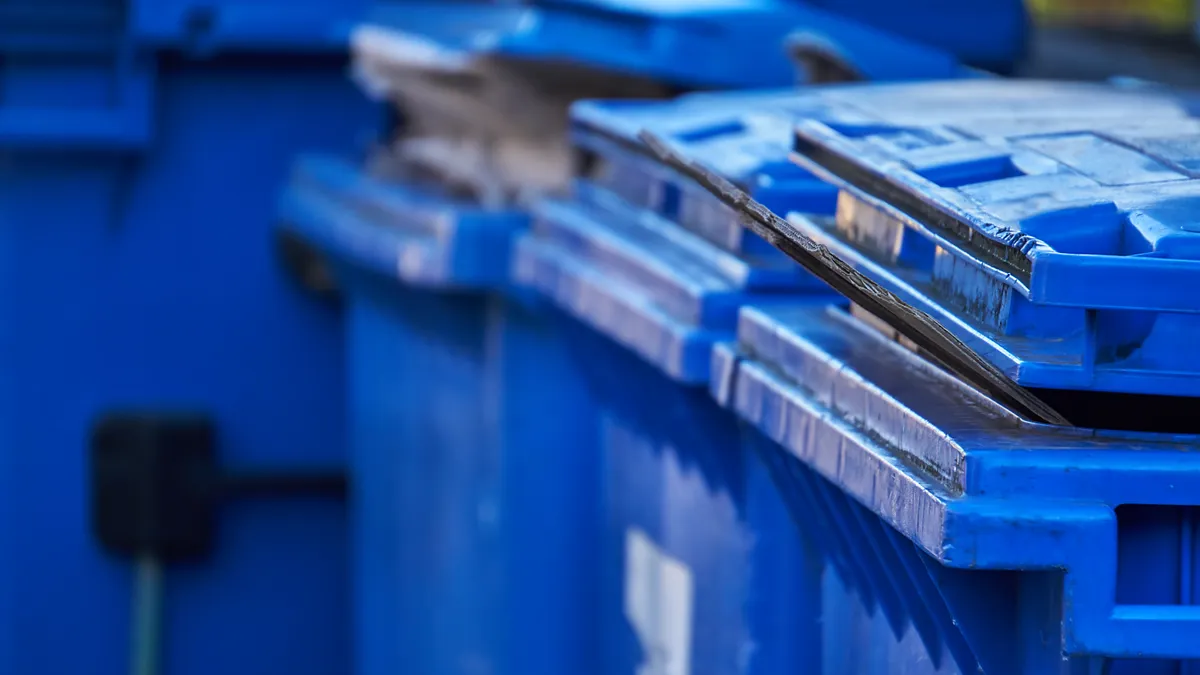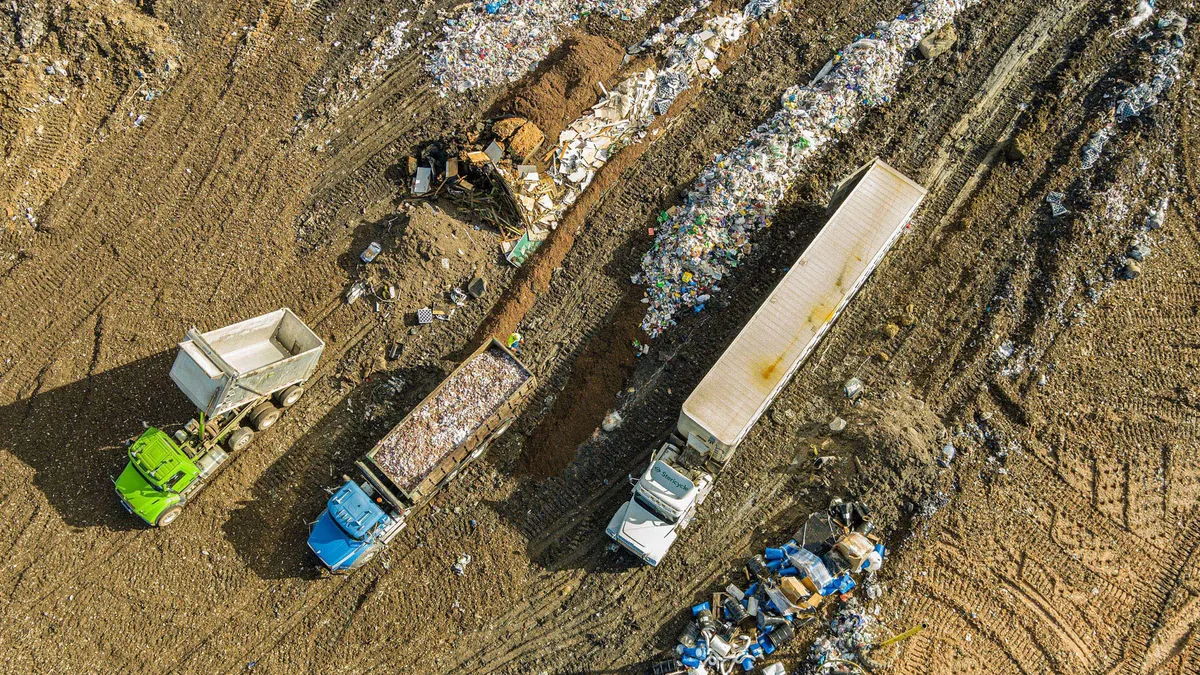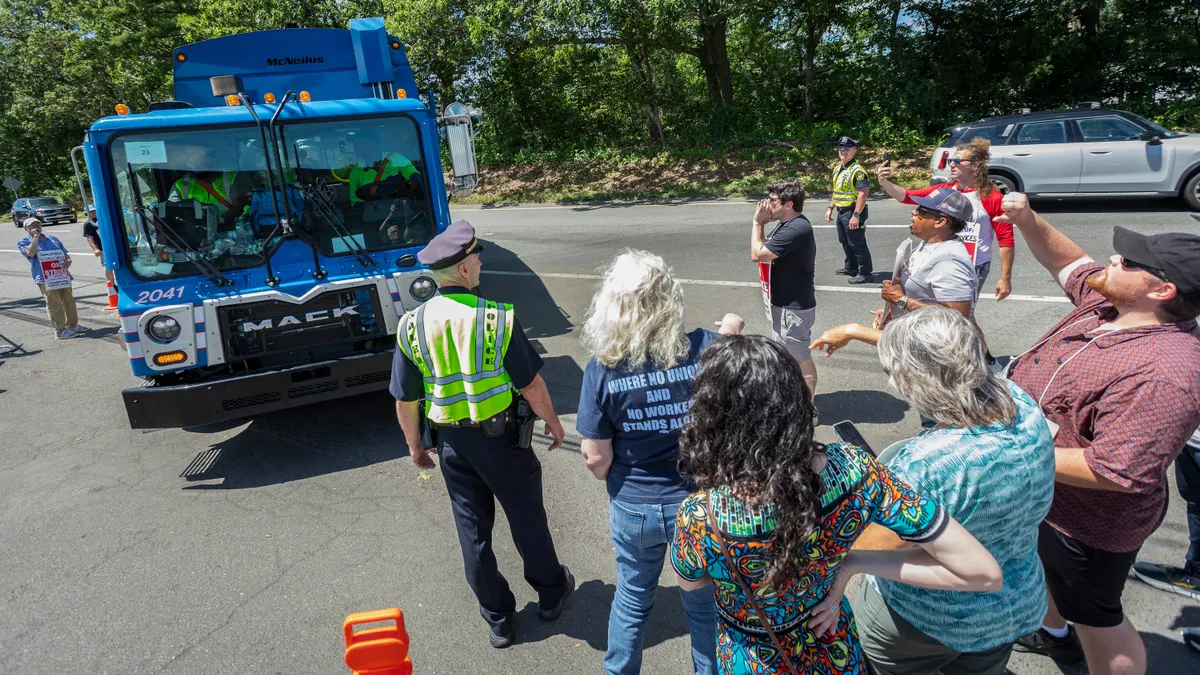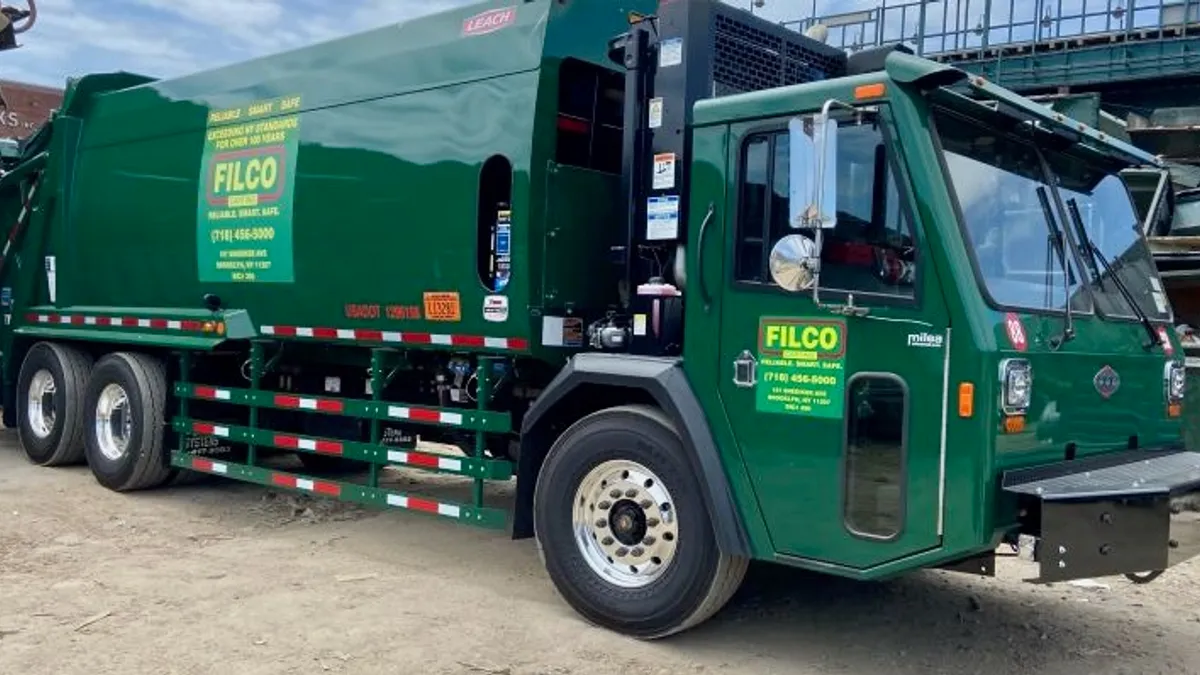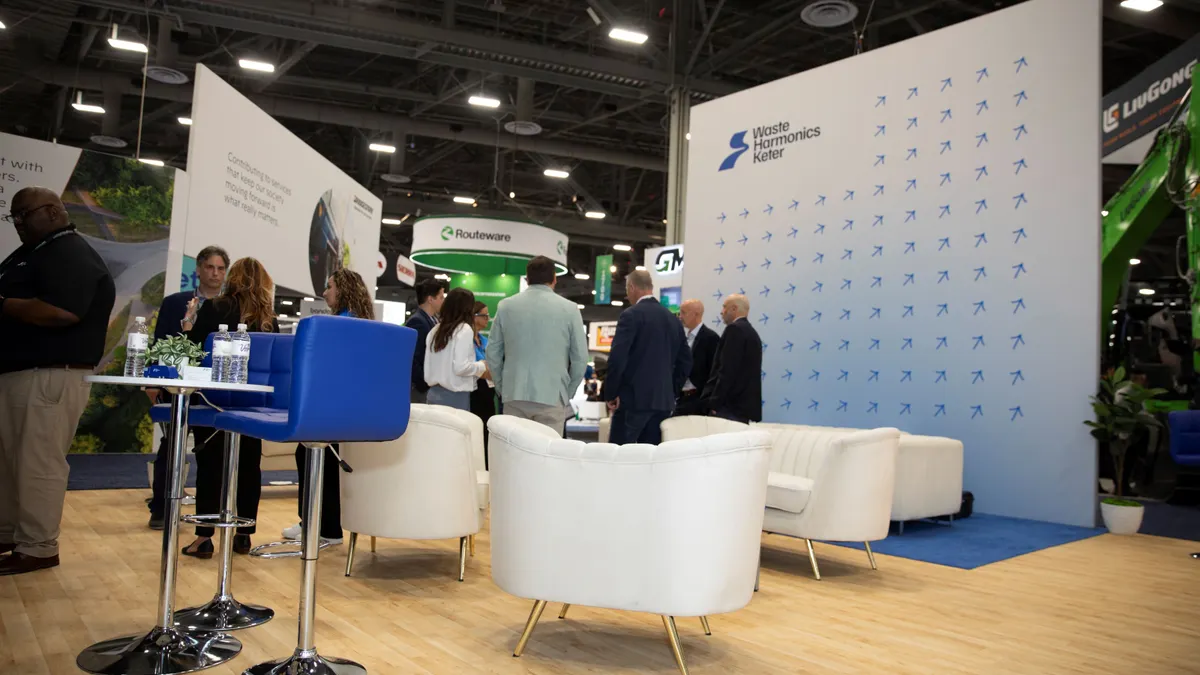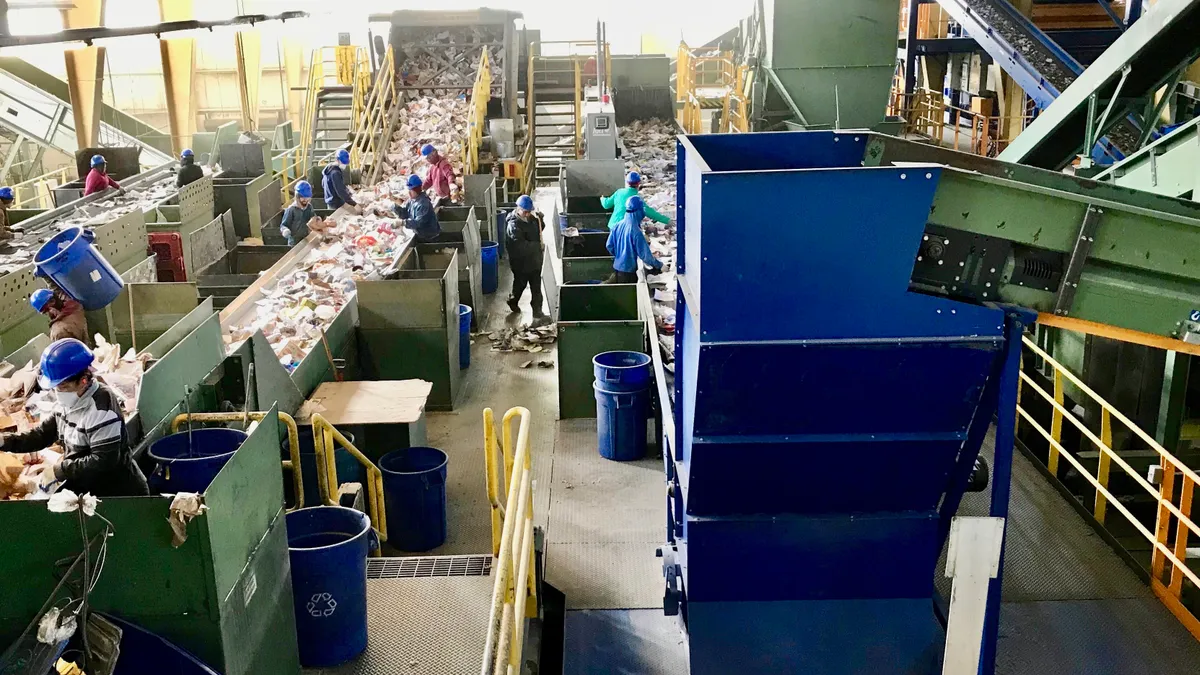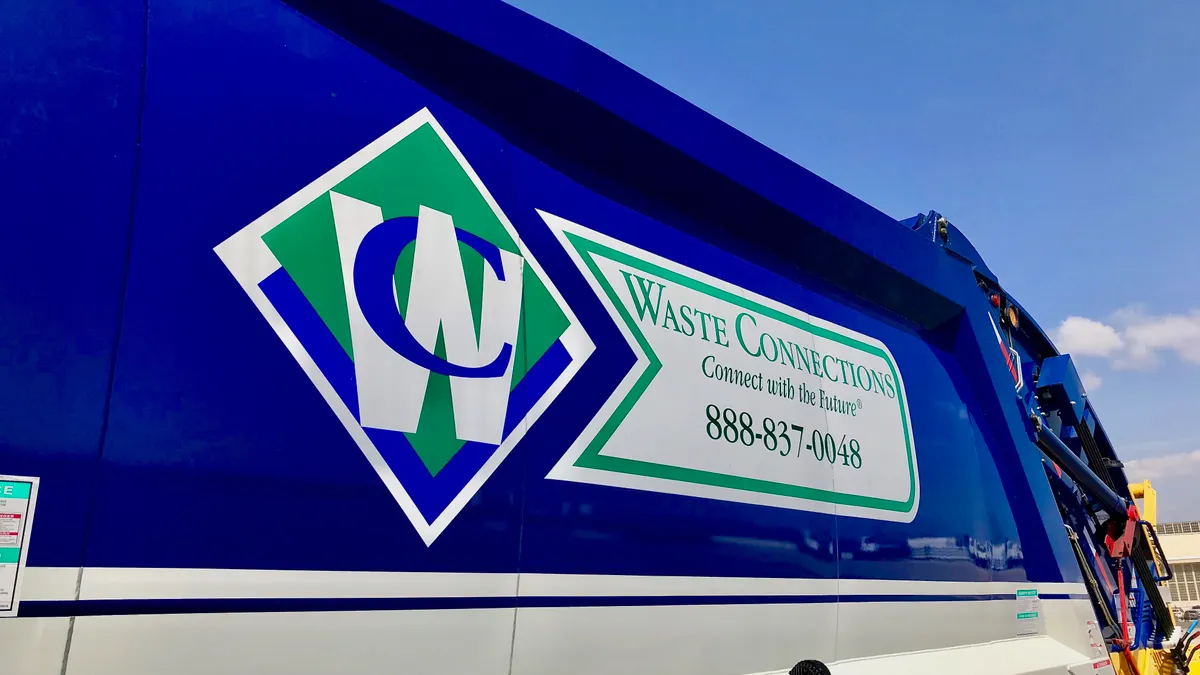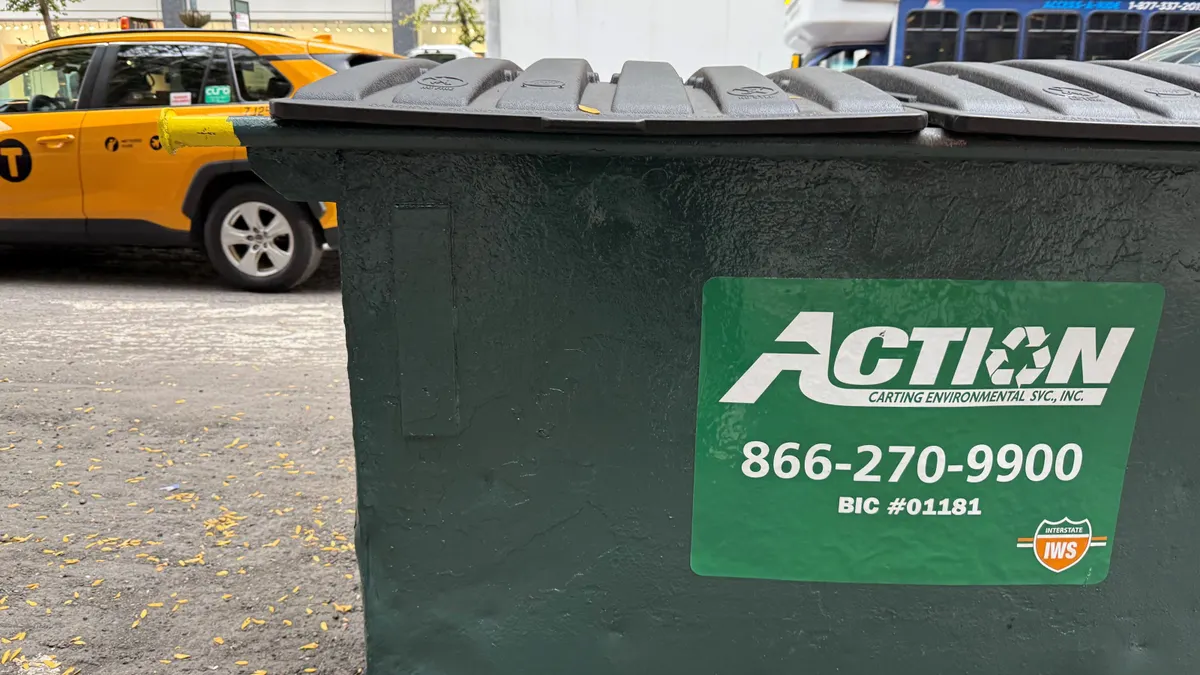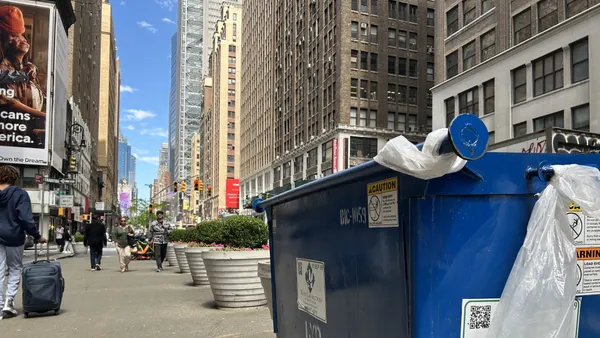Well-designed recycling systems with intuitive features can go a long way in helping raise recycling rates and keep valuable material out of landfills, said speakers at the Solid Waste Association of North America’s Pennsylvania chapter conference this week.
Speakers from the recycling design engineering sector and the landfill management sector shared ideas and tips for raising recycling rates through good design and creative reuse strategies. Here are some takeaways from the event, held Sept. 3-4 in Harrisburg, Pennsylvania.
Design programs for daily realities
A good recycling system design takes into account the specific “audience” it serves, whether it’s a single-family home, a college campus with transient students or a multifamily apartment complex, said Stacey Demers, project director at SCS Engineers, during a presentation on mitigating contamination.
Recycling programs won’t work if they’re not tailored to that audience’s day-to-day realities, she said. For example, a region’s income level might affect how people use and prioritize recycling.
A program where residents pay less for a smaller bin size is meant to incentivize waste reduction, but it can sometimes mean a family on a budget will automatically pay for the smallest, cheapest bin even though it doesn’t match their trash and recycling output.
When the trash bin overflows, that trash might end up in the recycling bin instead, spiking contamination rates, Demers said.
Conversely, opt-in recycling programs might have fewer overall users but achieve much lower contamination rates, she said. “These are people who have said they want it, and they want to try and do the right thing by recycling,” she said.
“It's not so much about developing new programs. It's about getting people to use the programs we have” and adjusting them to accommodate differences in the waste stream, she said. That could mean adjusting programs on a college campus that generates high amounts of fast food wrappers and to-go coffee cups, or an office complex that generates more paper.
Plan differently for multifamily housing
Raising recycling rates in multifamily buildings is notoriously challenging, in part because residents move in and out more frequently and often don’t receive the same recycling messaging as single-family homes.
Simply telling residents to recycle more or recycle correctly won’t work unless they have resources to make it happen, Demers said.
Some building managers can cut down on dumping and recycling contamination by rightsizing their waste and recycling bins, she said. Some apartment buildings offer a set of large dumpsters for trash but only offer a small cart for recyclables, meaning residents either set recyclables on the floor next to full recycling bins or just throw it in the trash, she said.
When possible, multifamily housing can benefit from better bin placement, too. In an SCS study of a large, 300-plus unit building, Demers said residents had access to just two recycling drop-off points that were located on one side of the building. Those who lived closer to the drop-offs were much more likely to use them, she said.
“We can help multifamily complexes create closer or more convenient collection areas,” she said, such as a basement spot or a spot in a side parking lot.
Configure convenience centers to reduce sorting guesswork
Convenience centers — typically designed as an open area with dedicated spots to drop off recycling and bulky items — are “an underrated tool” to raise recycling rates, said Quinn Bernier, senior project professional at SCS. These centers are often created by a local government to serve residents.
Centrally located convenience centers can curb illegal dumping or boost landfill diversion, particularly in rural regions or areas without curbside collection, Bernier added. They’re also a good choice for collecting things not accepted at the curb, such as glass bottles, appliances or paint, she said.
Building a circular, one-way drive-through design can help eliminate confusion by placing drop-off spots for the most popular items at the beginning of the circle. Put the trash receptacle at the very end of the loop, she recommends. “We want to give people every opportunity to do their recycling, and if the items they have left don’t fit in any other bin, they know it’s definitely trash.” Station attendants should spend time near the bins where residents are expected to have the most questions, she said.
Bin design also offers subtle messaging that reduces confusion, she said. For example, a bin with a narrow opening for cardboard would prevent users from putting in bulkier items like laundry detergent containers, she said.
“You want to incorporate these [design aspects] as an engineering control, so when people show up, it’s physically easier for them to sort things and not have to rely too much on signage or words to do it right,” she said.
Treat landfills as a last line of defense
Poorly designed or non-existent recycling programs can have negative consequences for landfill operators that are constantly managing their capacity, said Charlie Nowak, a sales representative for equipment company TANA North America who has worked at numerous landfills throughout his career.
During a separate talk at the SWANA event, Nowak urged landfill operators to adopt creative diversion methods to rescue valuable recycled materials that enter their facilities. This will become more and more important as landfills across the country reach the end of their lifespans, he said.
It’s not new for workers at some landfills to collect and sell valuable materials like cans and cardboard, he said. Recently, though, he’s heard of a few landfills in the western U.S. that have invested in more formal sorting equipment like eddy current separators as part of an on-site picking line. Collecting enough recyclable material and selling it to buyers at similar prices to what MRFs charge adds a revenue stream and keeps that valuable material out of the landfill, he said.
Larger, bulkier items that usually take up space — think wood chips, mattresses and tires — can also serve more beneficial uses than simply being tossed into the landfill whole, he said.
In some parts of Virginia, wood and yard waste is chipped and used as a road covering at waste facilities, which soaks up puddles from heavy rain during wet times and also suppresses dust during the drier season, he said.
Shredded tires could also make good road cover or as alternative daily cover. Mattress fluff, once shredded, makes a similarly ideal ADC option, he said.
“We have to protect the landfills we do have, and extend their lives as much as possible until the people who are doing the recycling can improve what they’re doing,” he said.


